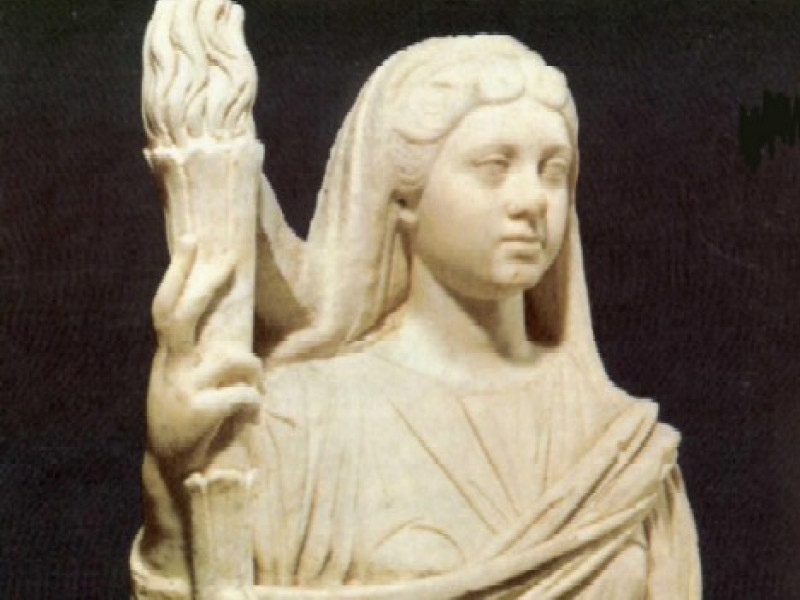Eleusinian Mysteries
The Eleusinian Mysteries centred on the belief in the agricultural fertility and the cycle of the seasons, which included the myth of two goddesses, Demeter (Δημήτηρ) and her daughter, Kore, or Persephone (Περσεφόνη) as she was often known as the goddess of the Underworld.
Much of the myth about Demeter and her daughter can be found in the Homeric Hymn to Demeter, which gives an account of Kore's abduction by Hades, the ruler of the netherworld (Underworld), and the compromise between Demeter and Hades to allow Kore to live alternately with her mother and husband. The meaning behind their compromise was that Kore's stay on the surface and the Underworld coincided with the seasons. Winter represented death and the time that Kore ruled as Persephone, goddess of the Underworld.
For those people interested in the myth of Demeter and the abduction of Persephone (Kore), then I would suggest that you read Demeter and Persephone.
The cult was based in Eleusis, a city in Attica, because of the myth of Demeter (according to the Homeric Hymn), though much of its ceremonies and processions were taken over by the historical Athens.
Demeter had been wandering around the world, searching for her daughter, when she came to Eleusis. The goddess became a guest of a poor family. Demeter showed special favour to the family, and she tried to immortalise Celeus's baby son by burning away his mortal body, but his mother interrupted the goddess. Because of their hospitality, she taught them the mystery rites before she left, and Demeter ordered them to build a temple in her honour and that of her daughter Kore (Persephone).
The seasons and agriculture were very important to ancient civilisation and culture, and each culture had their own myths about fertility and the seasons.
The myths surrounding Demeter and Kore explained several important issues. The most obvious was the seasonal changes and the life-death cycle. Persephone's abduction was like death to her mother, since Hades, Lord of the Dead, kept her in his infernal domain.
There are several festivals that were held in honour of Demeter and Kore, particularly the Thesmophoria.
The Thesmophoria lasted as many as ten days, but in Athens it was held only for three days - on the 11th, 12th and 13th days of the month Pyanopsion (October). The festival involved mainly married women and involved the reenactment of the abduction of Kore.
See Greek Festivals, Thesmophoria for a brief description of the festival.
There were other fertility mysteries surrounding the two goddesses, Demeter and her daughter Persephone, called the Andania Mysteries. This cult was based in Andania, in Messenia.
Related Information
Sources
Homeric Hymn to Demeter.
Related Articles
See Demeter and Persephone.
Demeter, Persephone (Kore), Hades.
Ceres, Proserpina, Pluto.
By Jimmy Joe






